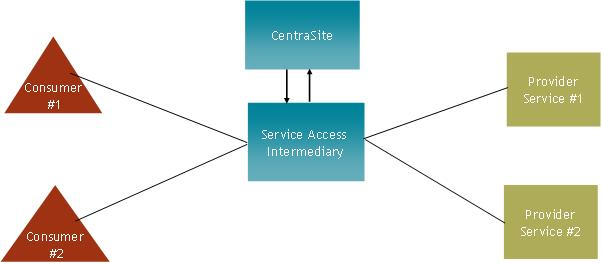Introduction to Virtualized Services
A virtualized service is a service that runs on webMethods Mediator and acts as the consumer-facing proxy for a native service that runs elsewhere on the network. You can have a virtualized service for a SOAP-based web service, a REST service, or an XML service. A virtualized service provides a layer of abstraction between the service consumer and the service provider, and promotes loose coupling by providing location, protocol, and format independence between the consuming application and the provider service.
You deploy virtualized services to the webMethods Mediator policy-enforcement point. When a virtualized service is deployed, consumers access this proxy service instead of the actual native service. The virtualized service forwards the request to the appropriate back-end service and, if it has been configured to do so, performs additional mediation functions such as message transformation, protocol bridging, load balancing and failover handling.
The figure below shows webMethods Mediator (the service access intermediary) mediating traffic between consumers and virtualized services. Mediator provides loose coupling between consumers and providers and is able to identify the consumers who are accessing the provider services by examining the traffic flowing through it.

A virtual service is an asset that you create and store in the Asset Catalog. You should virtualize each service that you want to deploy to Mediator. You can virtualize a service from scratch or make a virtual copy of an existing service and then configure the required information in the virtual service definition (VSD) for the service.
You can create one or more virtual services for a single SOAP-based web service. For example, if you have different authentication or routing requirements for two different sets of consumers, you would create a different virtual service for each set of consumers.
 Contact Support
|
Community
|
Feedback
Contact Support
|
Community
|
Feedback 